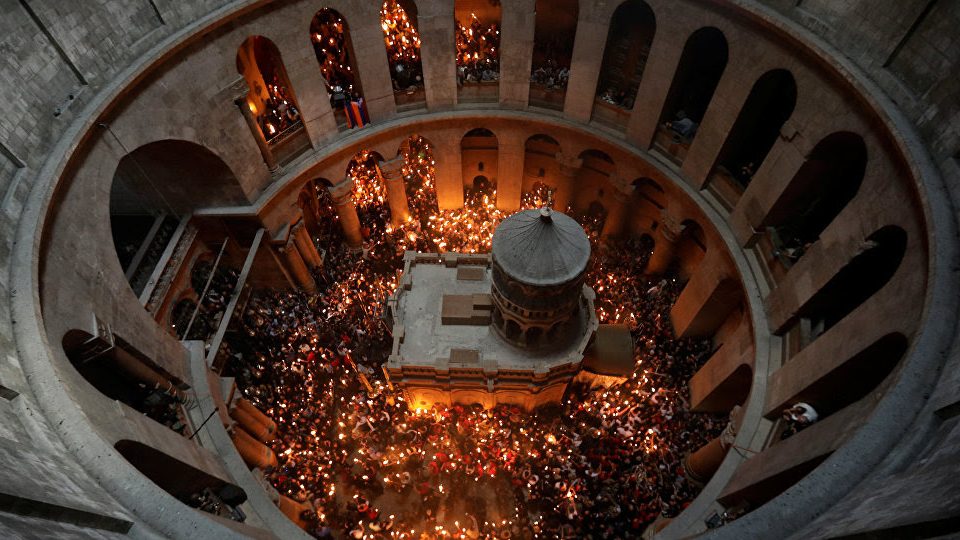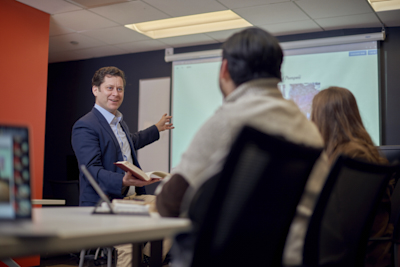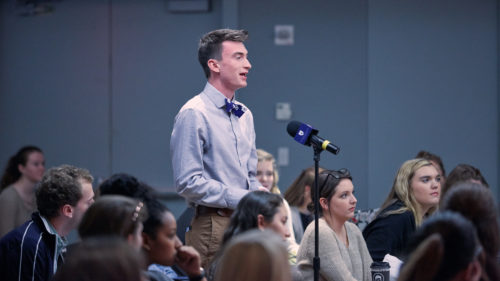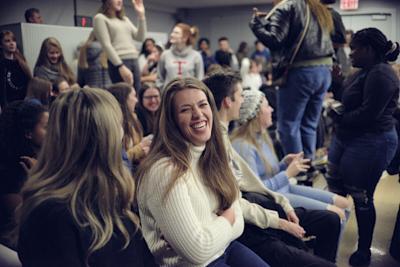Liturgy: “Liturgy and the Holy Week”
It seems fitting to begin an entry in a series called “Liturgy” by highlighting the fact that we are entering the liturgical high point of the Christian calendar, Holy Week.

What is the King’s Liturgy? King’s Liturgy defines our experience together as a Christian community. It outlines the rhythms we celebrate with the Church at large: Scripture readings, Sabbath habits, and celebration of Holy Days and historical events.
This Week’s Lectionary Readings
Isaiah 50:4-9a
Philippians 2:5-11
Mark 14:1-15:47
Psalm 31:9-6
This week’s liturgy is contributed by Dr. Joshua Kinlaw, assistant professor of history and humanities:
It seems fitting to begin an entry in a series called “Liturgy” by highlighting the fact that we are entering the liturgical high point of the Christian calendar, Holy Week. Christians have several opportunities to attend church services this week leading to Easter–all are among the most liturgically rich and distinct of the year.
“Liturgy” can mean different things to different people. A classical historian knows it in its original, Greek context as a “public work” that made the Roman Empire thrive. Liturgy is pre-Christian, then. And even now it is not limited to Christianity: surely the Jewish students I taught, swaying at prayer between classes—or the Muslims I saw responding to the call to prayer five times per day in the Middle East—are engaged in liturgy. More recently, a popular academic has offered an expanded definition: he illustrates how a visit to the shopping mall is at some philosophical level a “liturgy.” Here I mean Christian rites and ceremonies whose ultimate expression is the Eucharist.
I’ve found myself drawn towards a more liturgical expression of the faith since my undergraduate days. There were multiple reasons for this. One of them was my reading. But another was friendships with people from more liturgical traditions. During my college study abroad program in England, a friend invited me to a Maundy Thursday service. As a history major, I couldn’t help but be fascinated by the Latin name and the ancient rites. My interest was not simply intellectual, but rather existential. The very idea of attending a late-night service was strange to me. The sight of violet veils and smells of incense were similarly foreign. Both were aspects of what I might call a whole-body worship experience that I found appealing.
Liturgy is not an end in itself. It is not enough. But it it is encouraging to me in that it lent a certain solidity to Christian tradition that I had only heard or read about previously. Like medieval stained glass, many elements we associate with the “high church” were meant to make the faith more “livable.” Encountering the tradition with my senses–standing for the Gospel, kneeling for prayers–somehow strengthened my faith. Living in New York has only increased my appreciation: a subway nearly full of folks with ashes on their foreheads; brunchers carrying palm fronds. This is a “religious” city if you have eyes to see.
One of the first things I noticed about liturgical worship is its play with light and darkness. And this week provides one of the most obvious examples: we shift from the violet of Lent to the Easter’s bright white. Palm Sunday is “light” and triumphal, while the Tenebrae (Latin “darkness”) services running Wednesday through Holy Saturday strip the altars and extinguish the candles. It is intentionally somber, and therefore radical.
It is worth noting that the scriptures read in many churches this week (including those in the lectionary we use here at TKC) are the basis of the light-dark symbolism. The readings all work together to glorify Christ’s Passion: Jesus’ triumphal entry into Jerusalem, heralded with palms and rejoicing, will end with his public execution. The betrayal of Judas, the “Crucify him!” of the crowd are among the darkest moments scripture. We know the end of this story, however: “In three days I will build another [temple].”
So it is fitting that in the Isaiah passage, beard plucked out, spat upon and beaten, the prophet is bowed but not broken: “Who will contend with me?” is among his final challenges! Taken together, these readings and the liturgies based upon them require us to pause in the darkness—in the betrayals, the tearful prayer, the crucifixion—in order to appreciate the light of Resurrection.




